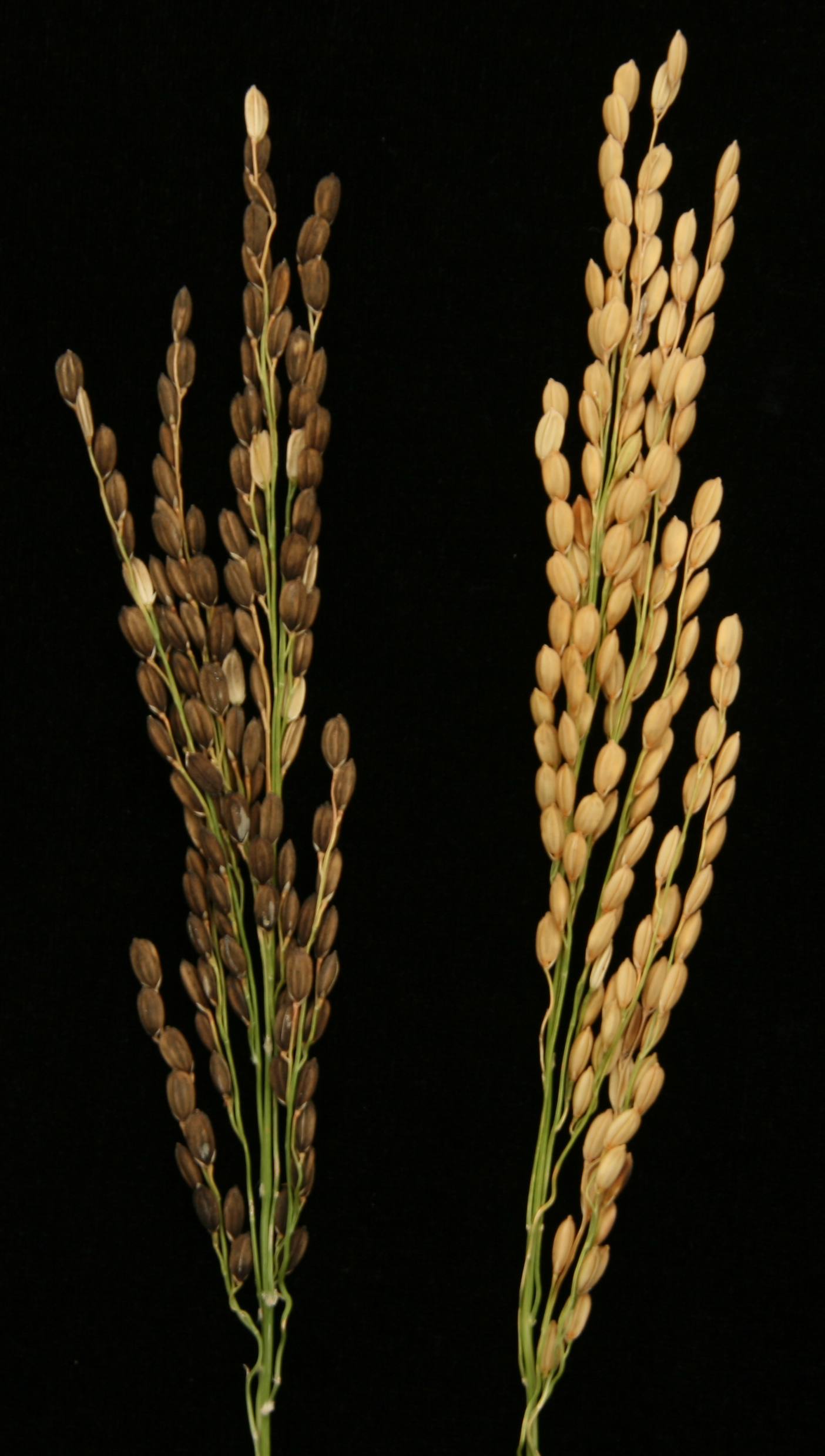Recently, Zhu Bofeng et al. finished one research about rice black seed hull gene cloning and analyses, which was published in Plant Phsiology (10.1104/pp.110.168500).
The wild rice species exhibits seed shattering habit, prostrate growth and black-colored seed hull. Over the long time of domestication, these morphological traits have changed and artificially selected in cultivated rice, including the loss of seed shattering habit, changing of seed hull coloration, and changing from prostrate to erect growth habit as well. There are a number of genes known to control seed shattering habit and prostrate growth. Examination of these genes will help us understand the forces driving the evolution of phenotypes during domestication.
However, the genetic basis for the transition from the black seed hull of the wild rice species to the straw-white seed hull of cultivated rice remains unknown. Zhu et al. reported that the black hull color of wild rice species was controlled by the Bh4 gene, which was fine-mapped to an 8.8-kb region on rice chromosome 4 using a cross between wild rice species Oryza rufipogon Griff accession W1943 (black hull) and Oryza sativa ssp. indica Guangluai 4 (straw-white hull). Zhu et al. identified that the Bh4 gene encoded an amino acid transporter, and that the functional polymorphism of a 22-bp deletion within the third exon of Bh4 gene was associated with the transition from black hull to straw-white hull in rice. Sequence analysis of cultivated rice Oryza sativa varieties and wild rice species Oryza rufipogon accessions revealed that the Bh4 has been the selection target and undergoes strong selection. So they proposed that the straw-white hull was favored and artificially selected in cultivated rice.
You can access this paper via this website: http://www.ncgr.ac.cn/research_scientific.asp


